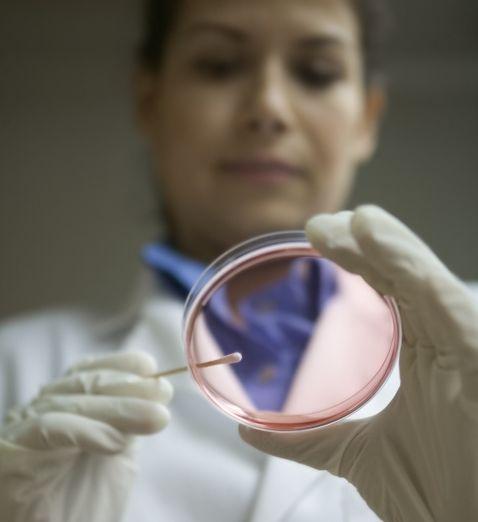Diagnosing Genital Herpes
August 17, 2010 by Joanna
Filed under Genital Herpes Resource
In the United States alone, genital herpes simplex virus 2 infections are reaching epidemic proportions. The recent herpes data from the Center for Disease Control (CDC) indicate that as many as 21.9% of the population between 12 and 74 years of age are infected with herpes simplex virus 2. The overwhelming majority of these are genital herpes infections. The prevalence of genital herpes is higher among persons who attend sexually transmitted diseases (STD) clinics and in many obstetrical practices. These data represent a 30% increase in herpes simplex virus 2 seroprevalence in the early 1990’s as compared with the late 1990’s. The United States is not the only country that has seen a marked increase in genital herpes in the last twenty years. Genital herpes epidemics are now well documented in Europe, Africa, and South America.
There are multiple reasons for the rise in Herpes Simplex Virus 2 infections worldwide. However, a major contributor to the rise of Herpes Simplex Virus 2 is the fact that most Herpes Simplex Virus 2 seropositive persons are unaware that they are infected with the herpes simplex virus 2. Although, new diagnostic tests are now available that could definitively identify those with Herpes Simplex Virus 2. Accurate diagnosis is the key to treatment and prevention of genital herpes. Genital herpes:
• Can be diagnosed
• Can be treated
• May be prevented
 Recognizing genital herpes
Recognizing genital herpes
Most people who have Herpes Simplex Virus 2 infection are unaware that they have it. Only about 20% of those infected with Herpes Simplex Virus 2 have symptoms that are recognized as genital herpes. Most do not recognize the symptoms of Herpes Simplex Virus 2. Much of this lack of recognition is due to the unfamiliarity with the signs and symptoms of herpes which are often mild and are easily confused with other conditions. However, once taught about the symptoms of the herpes disease, the majority of people infected with Herpes Simplex Virus 2 will return to the clinic within one year with a clinically symptomatic recurrence of genital herpes. In other words, with a little instruction, persons who have Herpes Simplex Virus 2 can be taught to recognize a recurrence of genital herpes. Recognizing a recurrence of genital herpes is key to controlling the herpes disease and reducing the possibility of transmitting the
Importance of Diagnosing Genital Herpes
Genital herpes while considered to be a rather benign infection does have severe complications. Genital herpes is a chronic infection that will affect the person emotionally, physically, and sexually for the rest of their life. Often these patients are misdiagnosed with another infection, thus, treated inappropriately. This is costly and poor clinical practice. If a pregnant woman becomes infected, especially during the third trimester, she is at increased risk of transmitting the herpes disease to her newborn. Neonatal herpes is a life-threatening infection that is associated with severe morbidity. Genital herpes infections have also been associated with the increased risk of acquisition of HIV. Open lesions present a portal of entry for the HIV virus. Lastly, Herpes Simplex Virus infection can allow HIV replication in cells previously immune to HIV. These complications emphasize the importance of letting a person know whether or not they are infected.
Determining Herpes Infection
Herpes can be diagnosed clinically, by culture, and by serology. As mentioned earlier, often patients are asymptomatic or mildly symptomatic. Clinical diagnosis of herpes is difficult in these cases. Also, lesions are not always present on patients. At this time the clinician must rely on a history and ask the patient to return when there are lesions. Cultures are very helpful if the patients presents early in the recurrence. However, viral shedding only lasts a few days and often the lesion has crusted or disappeared by the time the patients sees the clinician. Thus, a negative culture will not definitely rule out herpes. A new test which measures Herpes Simplex Virus DNA in a swab called a PCR assay may be more sensitive for detecting Herpes Simplex Virus in a lesion than a viral culture. The PCR assay is, however, more expensive than a viral culture. PCR assays need to be sent to regional reference laboratories.
The most reliable herpes diagnosis for most patients is an antibody test that is specific and sensitive for Herpes Simplex Virus 2 antibodies in serum. These tests are new and are major improvements over older assays which did not distinguish between past Herpes Simplex Virus 1 and past Herpes Simplex Virus 2. Persons with past Herpes Simplex Virus 2 infections make antibodies to the Herpes Simplex Virus 2. These new assays can distinguish between antibodies to Herpes Simplex Virus 2 from Herpes Simplex Virus 1. These assays are new and all laboratories do not do them. You need to specifically ask for these assays. Additionally, a test is now available for use in the clinic or the doctor’s office. This test is a type-specific Herpes Simplex Virus 2 serologic test that can give results within 15 minutes of pricking the patient’s finger.



